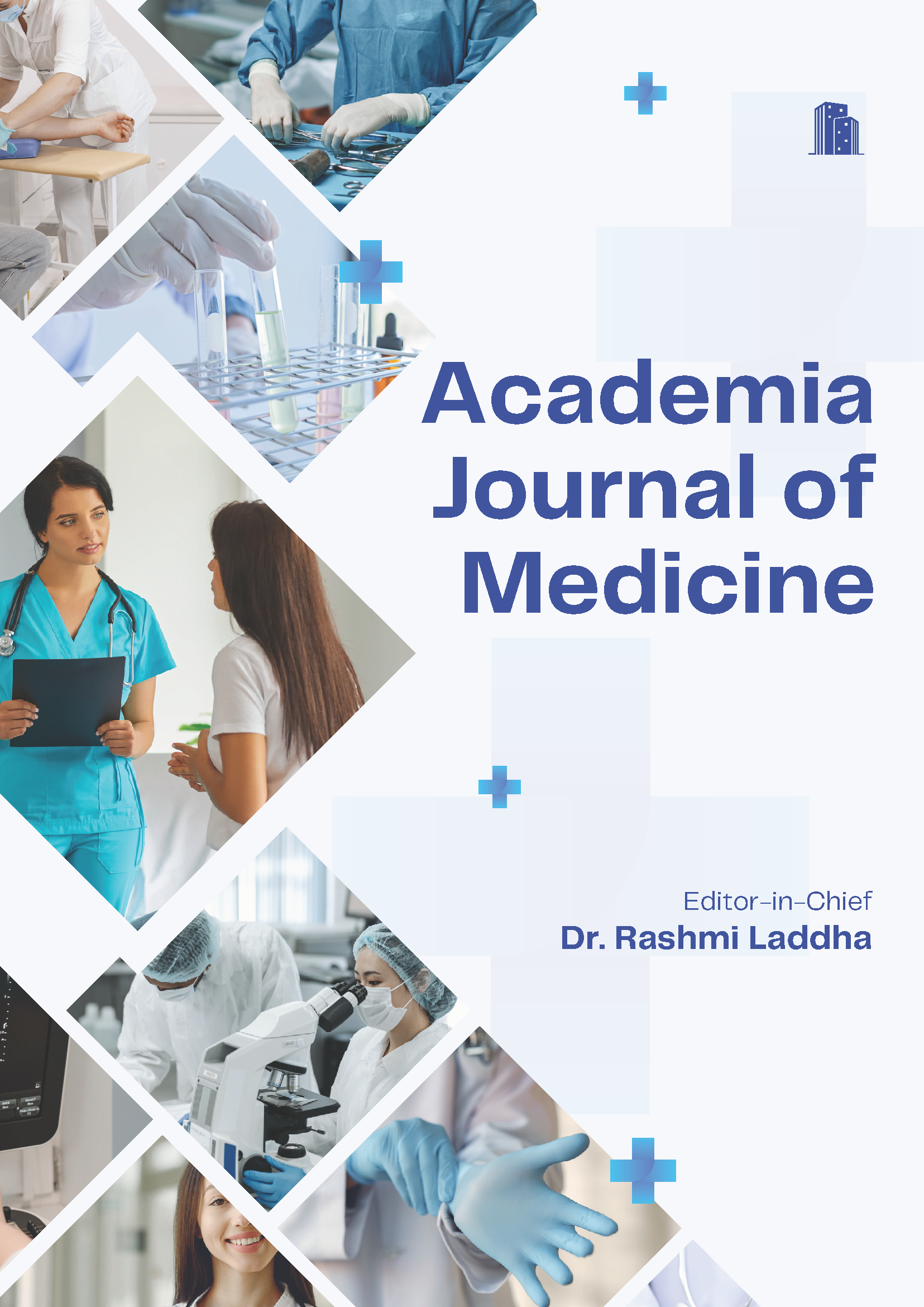To Correlate Socio-Demographic Factors with Glycemic Control and Awareness of Complications among Diabetes Mellitus Patients
Keywords:
Diabetes Mellitus, complication, Glycaemic status, urban and rural populationAbstract
Background: Diabetes currently affects more than 62 million Indians, which is more than 7.2% of the adult population. The average age on onset is 42.5 years. Nearly 1 million Indians die due to diabetes and its complications every year. Education is one of the key components in ensuring better treatment and control of diabetes. There is also evidence to show that increasing knowledge regarding diabetes and its complications has significant benefits including increase in compliance to treatment, thereby decreasing the complications associated with diabetes. Subjects and Methods: It is a cross sectional study, which included 430 diabetic patients attending general medicine OPD of Subbaiah institute of medical science and hospital, who met the inclusion and exclusion criteria. Data was collected using self-designed questionnaire and entered in excel sheet and compared using SPSS Ver 21. The aim is to study the association between glycemic control and socio-demographic variables in our study population, to study the association between awareness of complication in diabetes with socio-demographic variables. Results: Our study included 430 diabetic patients who attended medicine OPD of Subbaiah institute of medical science and hospital. Of which 206 (47.6%) were male and 227 (52.4%) were females. We had 254 (58.7%) of rural patients and 179 (47.3%) of patients from urban side. In our study we found that coronary vascular disease (47%) was most known complication, followed by retinopathy (39.9%) then by nephropathy (37%), and by neuropathy (30%). Awareness about peripheral vascular disease was least among our study population. Hypoglycaemia symptoms were reported more in the rural population than urban population. Regarding glycaemic control 44% of patients had their sugars between 200 to 300 mg/ dl. There was no statistical significant difference in blood sugar levels between urban and rural population. Conclusion : Awareness of complication of diabetes was low in our study group. There was no significant difference in awareness of diabetic complication and glycaemic control between the urban and rural population. Hence irrespective of place of residence people needs to be educated regarding diabetes, its chronicity and need for regular monitoring of blood sugars to avoid its complication from developing.
Downloads
References
1. Goryakin Y, Rocco L, Suhrcke M. The contribution of urbanization to non-communicable diseases: Evidence from 173 countries from 1980 to. Econ Hum Biol. 2008;26:151–63. Available from: https://doi.org/10.1016/j.ehb.2017.03.004.
2. Allender S, Lacey B, Webster P. Level of urbanization and non-communicable disease risk factors in Tamil Nadu. India Bull World Health Organ. 2010;88:297–304. Available from: https://doi.org/10.2471/blt.09.065847.
3. Li S, Wang J, Zhang B, Li X, Liu Y. Diabetes Mellitus and Cause-Specific Mortality: A Population-Based Study. Diabetes Metab J. 2019;43(3):319–341. Available from: https://doi.org/
10.4093/dmj.2018.0060.
4. Kaveeshwar SA, Cornwall J. The current state of diabetes mellitus in India. Australas Med J. 2014;7(1):45–48. Available from: https://dx.doi.org/10.4066/AMJ.2013.1979.
5. Deshpande MAD, Harris-Hayes M, Schootman. Epidemiology of Diabetes and Diabetes-Related Complications. Phys Ther. 2008;88(11):1254–1264. Available from: https://doi.org/10. 2522/ptj.20080020.
6. Tuttolomondo A, Maida C, Pinto A. Diabetic foot syndrome as a possible cardiovascular marker in diabetic patients. J Diabetes Res. 2015;2015:12. Available from: https://doi.org/10.1155/ 2015/268390.
7. Deepa M, Bhansali A. Knowledge and awareness of diabetes in urban and rural India: The Indian Council of Medical Research India Diabetes Study (Phase I): Indian Council of Medical Research India Diabetes. Indian J Endocrinol Metab. 2014;18(3):379–385. Available from: https://doi.org/10.4103/ 2230-8210.131191.
8. Arambewela MH, Somasundaram NP. Prevalence of Chronic Complications, Their Risk Factors, and the Cardiovascular Risk Factors among Patients with Type 2 Diabetes Attending the Diabetic Clinic at a Tertiary Care Hospital in Sri Lanka. J Diabetes Res. 2018;2018:4504287. Available from: https://doi. org/10.1155/2018/4504287.
9. Soedamah-Muthu SS, Chaturvedi N, Witte DR, Stevens LK, Porta M, Fuller JH, et al. Relationship between risk factors and mortality in type 1 diabetic patients in Europe: the EURODIAB Prospective Complications Study (PCS). Diabetes Care. 2008;31(7):1360–1366. Available from: https://doi.org/10. 2337/dc08-0107.
10. Hovind P, Tarnow L, Rossing P, Jensen BR, Graae M, Torp I. Predictors for the development of microalbuminuria and macroalbuminuria in patients with type 1 diabetes: Inception cohort study. BMJ. 2004;328:1105. Available from: https: //doi.org/10.1136/bmj.38070.450891.fe.
11. Raman R, Rani PK, Rachepalle R, Gnanamoorthy S, Uthra P, Kumaramanickavel S, et al. Prevalence of diabetic retinopathy in India: Sankara Nethralaya Diabetic Retinopathy Epidemiol ogy and Molecular Genetics Study report 2. Ophthalmology. 2009;116:311–319. Available from: https://doi.org/10.1016/j. ophtha.2008.09.010.
12. Bansal D, Gudala K, Muthyala H, Esam HP, Nayakallu R, Bhansali A. Prevalence and risk factors of development of peripheral diabetic neuropathy in type 2 diabetes mellitus in a tertiary care setting. J Diabetes Investig. 2014;5:714–735. Available from: https://dx.doi.org/10.1111/jdi.12223.
13. Cade WT. Diabetes-related microvascular and macrovas cular diseases in the physical therapy setting. Phys Ther. 2008;88(11):1322–1335. Available from: https://doi.org/10. 2522/ptj.20080008.
14. Chawla A, Chawla R, Jaggi S. Microvasular and macrovascular complications in diabetes mellitus: Distinct or continuum? Indian J Endocrinol Metab. 2016;20(4):546–551. Available from: https://dx.doi.org/10.4103/2230-8210.183480.
